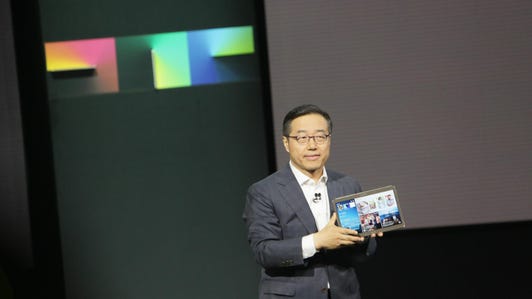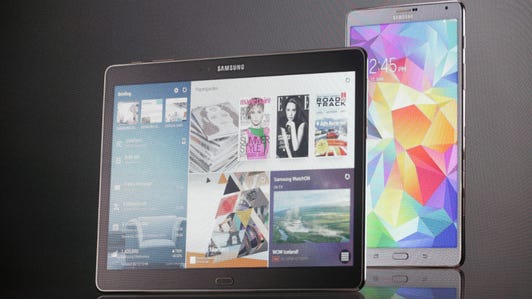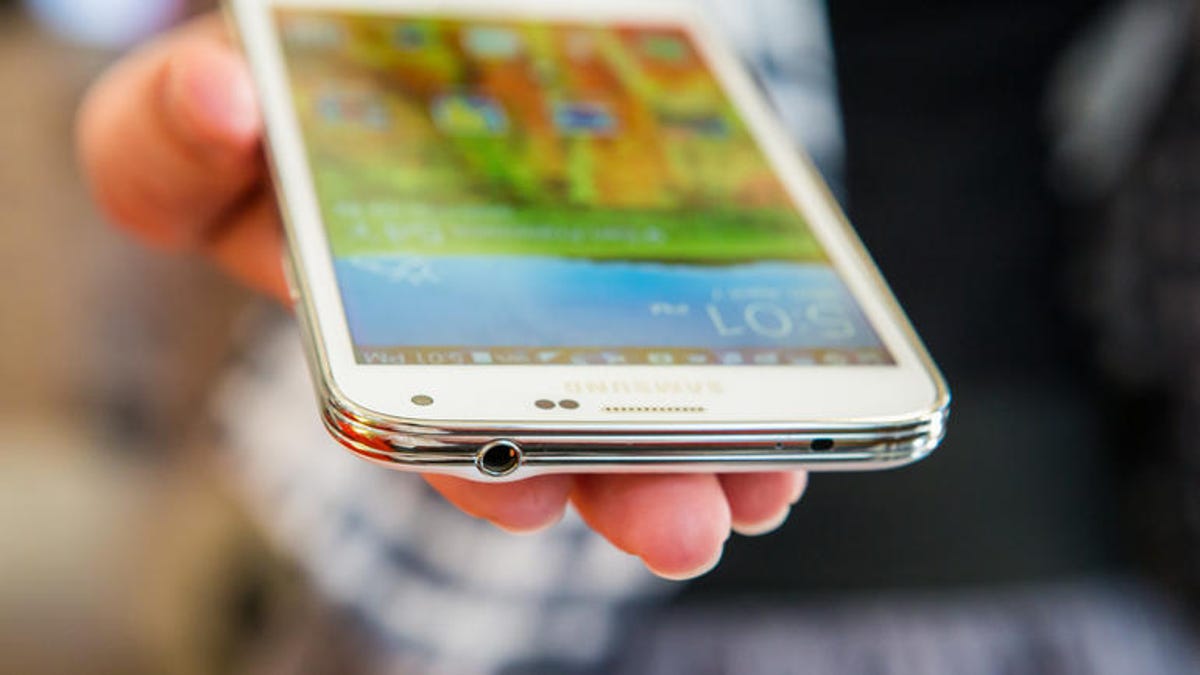
CNET
Samsung on Wednesday posted a 25 percent drop in second-quarter operating profits, marking the third straight quarter of profit declines as competition heats up in the smartphone market.
The South Korean electronics giant also warned the second half of 2014 would “remain a challenge” as competition in the mobile market leads to lower device prices and hurts its results.
“Prospects for growth remain unclear as competition over global market share intensifies in the mobile industry,” the company said in a press release. “Samsung expects to see its sales of mobile devices increase with the rollout of flagship products and new models, but profitability may suffer due to a heated race over price and product specifications.”
At the same time, Samsung said it will focus on releasing “new premium mobile devices, and a new flagship model in the large screen category, along with new mid-to-low-end models with more advanced features and competitive pricing” to address what’s expected to be stronger seasonal demand later this year. And it plans to introduce “a more diverse product portfolio” in wearables, a market that’s expected to grow.
“Samsung will solidify its smartphone market leadership by further strengthening its product portfolio and leveraging its differentiated technologies and design,” the company said.
Samsung Gear Fit, up close (photos)
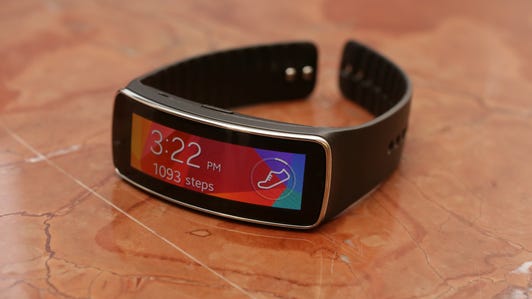

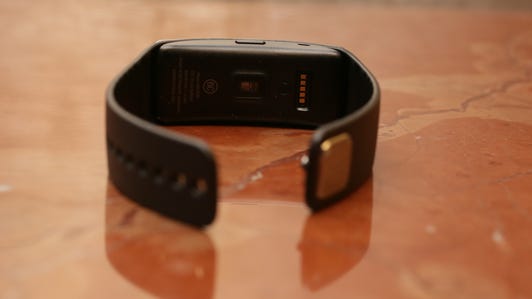

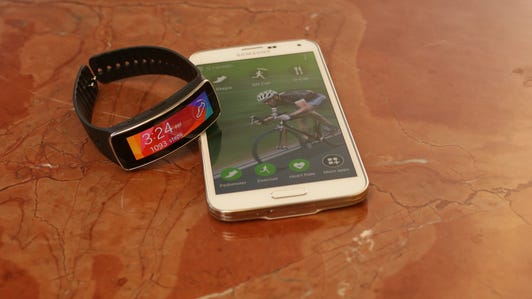

The results come about a month after Samsung warned its profits and sales would be weak. In an unusual statement labeled “reference material” released with the guidance in early July, Samsung blamed its weak results on a slowdown in overall smartphone market growth and a strong Korean won, among other factors. The company has been counting on new flagship devices, such as the Galaxy S5 smartphone and Galaxy Tab S tablet, to boost results, but competition has been fierce.
Samsung on Wednesday said market demand for mobile devices typically is low during the second quarter, but overall market demand for smartphones was flat from the first quarter while tablet demand fell slightly. Samsung, though, posted lower shipments for both smartphones and tablets because of increased costs related to sales of the Galaxy S5. Excess inventory in Europe caused sales for the devices to slide, and Samsung increased the amount it spent on marketing to counteract the issue.
Samsung’s mobile division, which typically accounts for two-thirds of the company’s revenue, recorded a second-quarter operating profit of 4.42 trillion won ($4.31 billion), down 30 percent from the previous year and down 31 percent sequentially. Sales slid 20 percent to 28.45 trillion won ($27.65 billion).
Overall, Samsung’s operating profit totaled 7.19 trillion won ($6.99 billion), down from 9.53 trillion won in the year-earlier period. Sales slid 8.9 percent to 52.35 trillion won ($51 billion).
The period marked the first quarter of sales for Samsung’s newest flagship smartphone, the Galaxy S5. The company vowed the device, which it unveiled in late February and started selling in April, would sell better than its predecessor, the Galaxy S4. Samsung in May revealed it sold 11 million Galaxy S5s in the first month of sales, outpacing the Galaxy S4 by 1 million units. But there have been worries lately that Galaxy S5 sales are weaker than hoped, and Samsung hasn’t released any updated shipment figures.
See also
- Samsung sees sluggish smartphone market hurting Q2
- Gear Fit: How Samsung’s fitness tracker got its curve
- Behind Samsung’s push to rule the world
- Apple posts solid Q3 profit, but iPhone sales don’t wow
- Three things we learned from Apple’s Q3 earnings call
Samsung has been under pressure from Chinese handset makers in recent months. It saw its global smartphone market share retreat about 7 percentage points year over year to 25 percent in the second quarter, according to IDC. The market share slide represented the second consecutive decline for Samsung, with the first quarter seeing the company’s first drop since 2009. And Samsung’s shipment volume in the second quarter dropped nearly 4 percent from the previous year while everyone else in the top 5, including Apple and Chinese vendors Huawei and Lenovo, saw their shipments rise, IDC said.
The competition from low-cost vendors is starting to impact Samsung’s financial results, as well as its position in the industry. To maintain its No. 1 smartphone market share, Samsung must focus on attracting buyers in regions — such as China — where local brands are rising quickly. At the same time, Samsung will face heightened competition on the high end from Apple when the Cupertino, Calif., company launches its newest devices — including anticipated iPhones with bigger screens and an iWatch — this fall. A big differentiator for Samsung’s devices has been their larger displays, and there are worries it could lose share to Apple once the iPhone 6 hits the market.
Earlier this month, Samsung still had hopes the current quarter would be better. At that time, it said increased shipments of its new smartphone lineup — which market watchers believe will include the Galaxy Note 4 phablet (phone/tablet hybrid) — should boost results. Samsung also expected its display business to benefit from higher shipments of mobile devices, and performance in its memory chip business should improve because of seasonality.
But not everyone was quite as sure. Analysts from Daishin Securities said earlier this month that competition may actually get worse for Samsung in the third quarter “with many consumers waiting for Apple’s new iPhone.”
Samsung appeared to agree on Wednesday as it warned about tough times to come in the second half of the year. Along with worries about competition on pricing for smartphones, Samsung said its chip business, excluding its memory chips, could post a loss because of weak demand and “investment spending” for next year.
The company added that the mobile market should improve due to stronger seasonal demand in the second half of the year. Along with releasing devices around the globe, Samsung said it would focus in China on responding “to growth in the LTE market by enhancing the competitiveness of its high-end smartphones and mass-market products.” It also said tablet demand should post “substantial growth” in the fourth quarter, driven by year-end seasonal promotions. Even with its efforts, it’s unclear whether Samsung will improve profit margins, the company said.
Samsung’s branching Galaxy S5 family tree (pictures)






Apple, meanwhile, last week reported earnings in its fiscal third quarter topped Wall Street expectations. iPhone sales, revenue results, and fourth-quarter guidance weren’t quite the blowout analysts had hoped for, but they all represented gains from the previous year. Apple also said its strength in China was surprising even to the company.
Overall, Apple sold 35.2 million iPhones during the quarter ended June 28, helping the device remain its biggest moneymaker. Analysts, on average, had expected Apple to sell 35.9 million iPhones in the period.
The only particularly weak area for Apple in the period was iPad sales, which dropped for the second quarter in a row. Apple also sold 13.3 million iPads in the most recent quarter, down 9 percent from a year ago. Analysts expected the company to sell about 14.4 million iPads. The company said inventory issues and lower demand were hurting sales, while Best Buy CEO Hubert Joly recently told Recode that tablet sales are “crashing.”
Samsung in early July warned that its second-quarter operating profit likely fell about 25 percent from the previous year to 7.2 trillion won ($7.12 billion). It also said sales likely totaled 52 trillion won, a 9.4 percent decline. Both figures fell short of analysts’ projections for the June period. The results marked Samsung’s worst in about two years and the third straight quarterly profit decline.


Now playing:
Watch this:
Can Android do for wearables what Apple did for smartphones?…
14:49
Along with blaming the stronger won and smartphone slowdown, Samsung at the time said tougher competition in the Chinese and European markets led to higher inventories of medium- and low-end smartphones. It also spent more on marketing to reduce inventory held by retailers or on trucks in preparation for its third-quarter peak season and new phone launch.
Samsung also noted that its earnings were hurt by increased price competition and weaker demand for 3G products in China ahead of expected growth of 4G LTE products in that market. And the company said tablet sales were “sluggish” as customers held onto them longer than smartphones before buying new models and as people opted for 5- to 6-inch phablets — phone and tablet hybrids — over 7- to 8-inch tablets. The weak demand for mobile devices in turn affected Samsung’s semiconductor and display businesses, which are key suppliers for Samsung’s own gadgets.
Analysts from KDB Daewoo Securities noted earlier this month that a big problem for Samsung is the rise of rivals hawking cheap phones.
“It will likely be difficult for the company to regain market share if it loses ground in the fast-growing low-end, emerging market segment,” the analysts said. “Given the aggressive pricing strategies of Chinese competitors like Xiaomi and Lenovo, we believe [Samsung] will have little choice but to follow suit in order to defend its market share.”
Updated at 5:30 p.m. PT: with additional details from Samsung’s report.
Samsung introduces the Galaxy Tab S (pictures)
